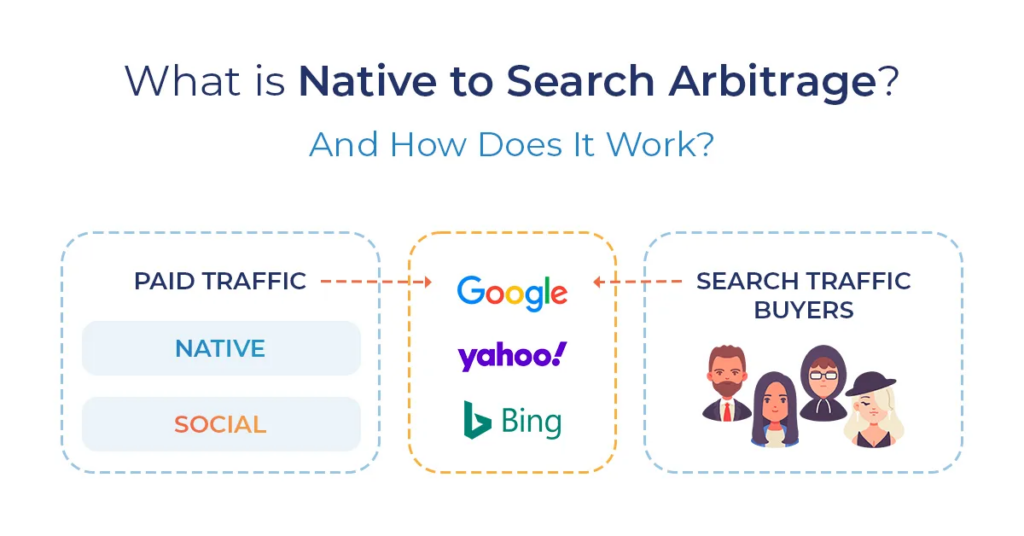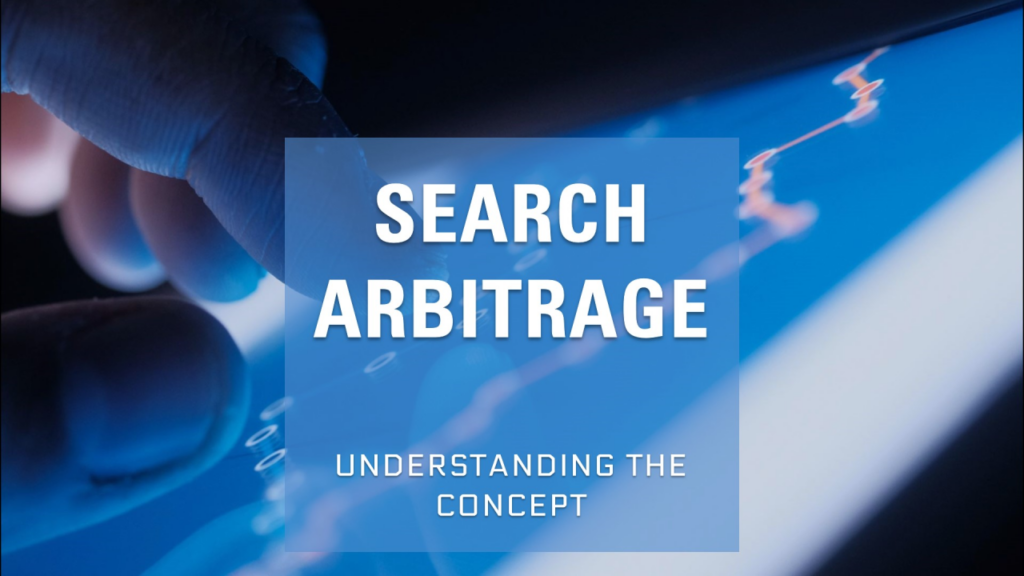In the realm of online advertising, native to search arbitrage stands as a prominent strategy, captivating the attention of marketers and businesses alike. But what exactly is native to search arbitrage, and how does it operate? In this quick guide, we delve into the intricacies of this phenomenon, unraveling its mechanisms and shedding light on its functionality.
Table of Contents
Defining Native to Search Arbitrage
Native to search arbitrage is a strategic approach employed by digital marketers to leverage the disparity in advertising costs across various platforms. It involves the process of purchasing traffic from one source, typically at a lower cost, and redirecting it to another platform where the ad revenue generated surpasses the initial expenditure.
In essence, it revolves around exploiting the variance in advertising rates to yield profitable returns. The process entails meticulous analysis and optimization to identify lucrative opportunities and maximize profitability.

The Mechanics of Native to Search Arbitrage
In the realm of Native to Search Arbitrage, the process begins with creating compelling native ads that resonate with the audience’s interests and preferences. These ads are seamlessly integrated into the content on platforms such as social media, websites, or mobile apps, ensuring a non-disruptive user experience.
For instance, a clothing brand might create a native ad featuring stylish outfits seamlessly integrated into a fashion blog post. Through engaging visuals, captivating copy, and strategic placement, native ads capture the attention of users and pique their curiosity.

Once the native ads have captured the audience’s interest, they lead users to a designated landing page optimized for search engines. This landing page is designed to align with the user’s search intent, providing relevant information and a clear call-to-action.
By directing users from native ads to search engine-optimized landing pages, businesses can increase their chances of conversion and drive valuable traffic to their website. For instance, a travel agency’s ad for a vacation package directs users to a landing page with detailed destination info and easy booking, facilitating smooth bookings and enhancing conversion rates.

Step-by-Step Guide to Native to Search Arbitrage
Mastering native to search arbitrage is crucial for businesses aiming to thrive online. It unlocks benefits like lead generation, sales growth, increased website traffic, and improved search engine rankings. To succeed in native to search arbitrage, one must grasp the following key points:
1.Research and Analysis:
Prior to launching a native to search arbitrage campaign, thorough research and analysis are imperative. Businesses must identify niches with substantial traffic and assess prevailing advertising rates across various platforms.
2.Strategic Keyword Selection:
At the core of any native to search arbitrage campaign lies the careful selection of keywords. Utilizing advanced keyword research tools like Google Keyword Planner, SEMrush, and Ahrefs, businesses can identify highly relevant keywords with substantial search volume and manageable competition.
For example, a travel agency targeting “all-inclusive vacation packages” instead of generic terms like “vacation” or “travel” can attract more qualified leads.

3.Compelling Landing Page Creation:
Once the keywords are identified, the next step is to craft compelling landing pages that seamlessly align with the user’s search intent and the content of the native ads. For instance, a travel agency can create a visually appealing landing page showcasing stunning imagery and detailed information about a specific destination, paired with a clear call-to-action for booking. Similarly, an e-commerce retailer can design a landing page highlighting a special promotion, featuring customer testimonials and an easy-to-navigate checkout process.

4.Traffic Acquisition:
The next crucial step is traffic acquisition. Businesses must leverage insights gleaned from research to procure traffic from diverse sources such as social media, content discovery platforms, and search engines. By strategically acquiring traffic at a lower cost compared to potential ad revenue, businesses maximize profitability.
For instance, a fashion retailer may utilize Instagram ads to reach fashion enthusiasts and drive them to their website, capitalizing on the platform’s visual nature and engaged user base. Effective traffic acquisition ensures a steady influx of qualified visitors, setting the stage for successful ad monetization.

5.Thorough Results Tracking:
Effective campaign management hinges on the ability to track and analyze results accurately. By utilizing analytics platforms like Google Analytics and Adobe Analytics, businesses can monitor key performance indicators such as click-through rates (CTR), conversion rates, and return on investment (ROI).
For example, analyzing CTR data can help identify which ad creatives resonate most with the target audience, enabling businesses to optimize campaigns for better performance.
6.Regular Campaign Optimization:
Continuous optimization is crucial to ensure the long-term success of native to search arbitrage campaigns. Businesses should regularly review and refine their keyword targeting, ad creatives, and landing page designs based on performance data and user feedback.
Strategies such as A/B testing ad creatives and adjusting bidding strategies can help businesses stay ahead of the competition and adapt to changing market dynamics.
For example, a software company running two variations of an ad to promote a new product, testing different headlines and visuals to determine which generates higher engagement.

7.Adherence to Best Practices:
Finally, businesses must adhere to industry best practices and ethical considerations to maintain the integrity and effectiveness of their native to search arbitrage campaigns. This includes ensuring ad relevance and transparency by clearly labeling native ads as sponsored content.
By prioritizing user experience and building trust with the audience, businesses can foster long-term relationships and drive sustainable growth.
This content is sourced from Youtube: View more.

Conclusion
In conclusion, Native to Search Arbitrage offers a strategic and innovative approach to digital marketing that combines the strengths of native advertising and search engine optimization. By seamlessly integrating native ads with search engine-optimized content, businesses can effectively engage their target audience, drive valuable traffic to their website, and increase conversions. With the right strategies and best practices in place, Native to Search Arbitrage can be a powerful tool for enhancing brand visibility, driving sales, and achieving marketing success.
FAQs
What is native to search arbitrage?
Native to search arbitrage is a digital marketing strategy that leverages the difference in advertising costs between various platforms to generate profits. It involves purchasing traffic from one source and redirecting it to another platform where the ad revenue generated exceeds the initial expenditure.
How does native to search arbitrage work?
Native to search arbitrage begins with creating compelling native ads that seamlessly blend into the content on platforms like social media or websites. These ads lead users to search engine-optimized landing pages designed to align with their search intent, ultimately driving conversions and valuable traffic to the website.
What are some best practices for native to search arbitrage campaigns?
Best practices include thorough keyword research, compelling ad creatives, transparent labeling of native ads, prioritizing user experience, and continuous campaign optimization. Adhering to ethical considerations ensures the integrity and effectiveness of campaigns.
Becoming a publisher with Bluefriday is straightforward. Begin displaying ads and earning revenue immediately.







